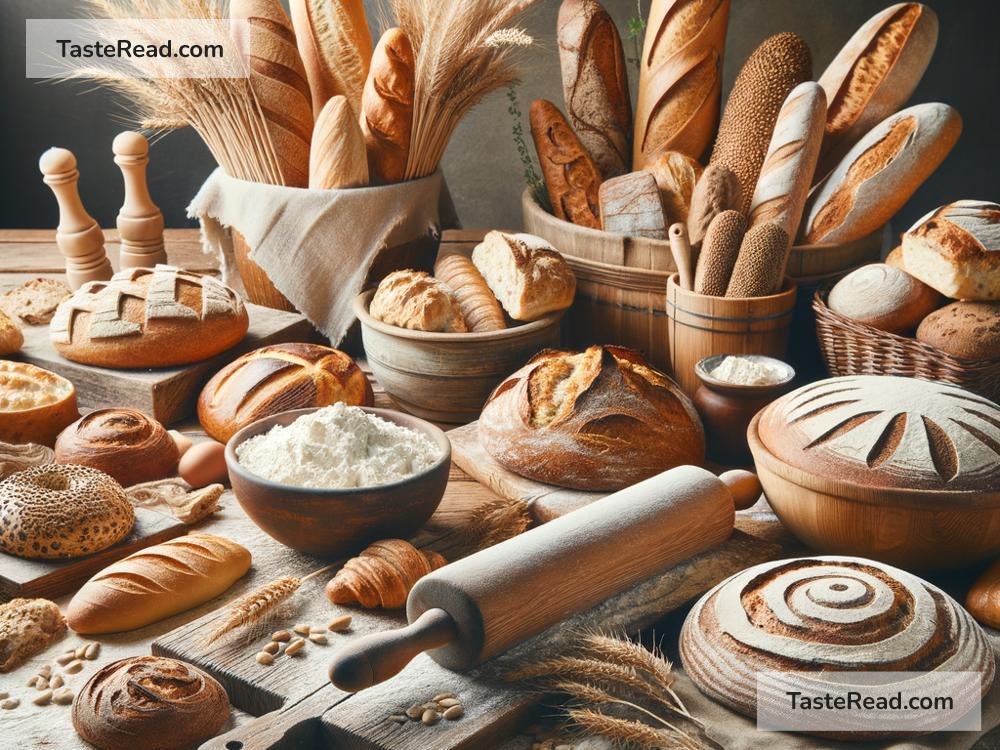Traditional Bread-Making Techniques in Europe: A Taste of Heritage
Bread is one of the oldest and most beloved foods in Europe. For centuries, it has been part of daily meals, celebrations, and traditions. Each country has its own unique style of bread-making, often involving techniques passed down through generations. These methods not only create delicious results but also represent the culture and history of the region. Let’s explore some of Europe’s traditional bread-making techniques in simple terms.
What Makes European Bread Unique?
European bread is known for its amazing variety. From soft and fluffy loaves to dense and chewy sourdoughs, there’s something for everyone. What sets traditional European bread apart is the skillful use of natural ingredients like flour, water, salt, and yeast—or sometimes just wild fermentation with no commercial yeast at all. Traditional bread-makers take pride in long preparation times, aiming to bring out deeper flavors and a better texture. The belief is simple: quality over speed.
Behind every loaf is a story, a tradition, and a set of time-tested techniques. Let’s look at a few notable bread-making styles from across Europe.
Sourdough: An Age-Old Artisan Technique
Sourdough bread is one of Europe’s oldest and most traditional techniques. This method relies on a “starter,” where flour and water are naturally fermented. The mixture captures wild yeast from the environment, which helps the dough rise over time.
The fermentation process can take days, but this slow method creates a tangy flavor and signature chewy texture. For many bakers in countries like Germany, France, and Italy, sourdough is a way of life. It doesn’t require added yeast, which makes it more natural and digestible for many people.
In places like France, sourdough bread is often used to bake the famous “pain de campagne” or country bread. Similarly, in Germany, rye-based sourdough bread, such as “vollkornbrot,” is a staple of hearty meals.
The Art of Shaping and Scoring
Traditional European bread is not just about taste—it’s also about how it looks. The way bread is shaped and scored (cutting patterns into the dough before baking) is often a sign of regional identity. For example, the French baguette is long and slim, with characteristic diagonal cuts. The Italian ciabatta, on the other hand, is short and rustic, often left unshaped so its airy interior can shine.
Scoring is another important aspect. Bakers use sharp knives to make patterns on the surface of the dough. These cuts allow steam to escape during baking, ensuring the bread doesn’t crack in random spots. Scoring also adds unique beauty to the loaf. In some areas, bakers create intricate designs that turn every loaf into a piece of art.
Stone-Baking and Wood-Fired Ovens
In many parts of Europe, traditional ovens are still used to bake bread. Stone ovens and wood-fired ovens are favorites among artisan bakers because they create a unique crust and flavor that modern ovens can’t replicate. The heat from stones and wood fuels provides even cooking, helping the bread to develop a crispy, golden crust while keeping the inside soft and tender.
In Italy, wood-fired ovens are used to bake “pane casareccio,” a simple rustic bread with a smoky aroma. Irish soda bread, which rises quickly without yeast, is often baked on cast iron griddles for a similar effect in traditional Irish kitchens.
Using Local Ingredients
The flavors of European bread often come from local ingredients. In France, many bakers use flour made from locally grown wheat. In Germany, rye is a preferred grain, especially for dark breads. In Scandinavian countries, barley and oats are commonly added to dough.
Traditionally, the water used in bread-making also plays an important role. For example, the mineral content of the water in certain regions of Italy is said to give their bread a unique taste. These small details reflect the cultural connection between bread and its environment.
Hands-On Techniques: Mixing and Kneading
One of the most important steps in bread-making is mixing and kneading, and traditional European methods often involve doing this by hand. Kneading helps develop the gluten in the dough, which gives bread its structure and stretch. In many bakeries, experienced bakers rely on their hands to feel whether the dough is ready—not just a timer or machine.
In Eastern Europe, a traditional Slavic bread called “kulich,” often made for Easter, involves lots of hand-kneading to get the dough smooth and stretchy.
Fermentation: Patience Pays Off
Unlike factory-made bread, traditional techniques emphasize slow fermentation. Allowing the dough to rise over several hours—or even overnight—enhances its flavor. For example, the Spanish “pan de pueblo,” a rural bread, is left to ferment for long periods to create its signature lightness and flavor.
Long fermentation also makes bread healthier. This process breaks down complex carbohydrates and proteins in the dough, making it easier to digest and more nutritious.
Conclusion: Tradition in Every Bite
European bread-making tradition is more than just a culinary skill; it’s an art form and a celebration of local culture. From sourdough starters to wood-fired ovens, these methods take time and effort, but the results are worth it. These techniques produce bread that is not only delicious but also rich in history and meaning.
Next time you enjoy a baguette, rye loaf, or ciabatta, take a moment to appreciate the generations of knowledge and tradition baked into each slice. Bread truly connects us to the past—and to each other. Europe’s traditional bread-making is proof that good things come to those who wait!


